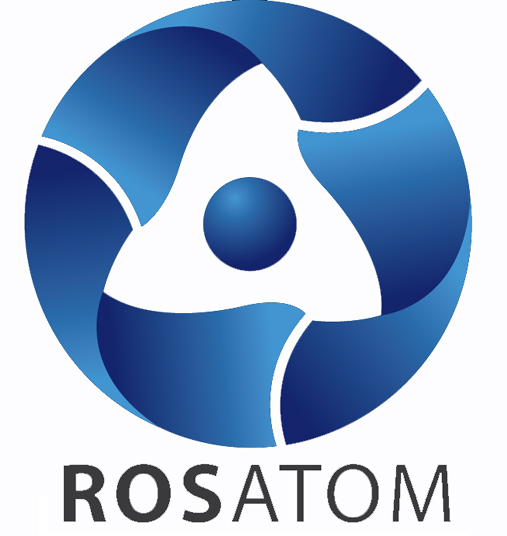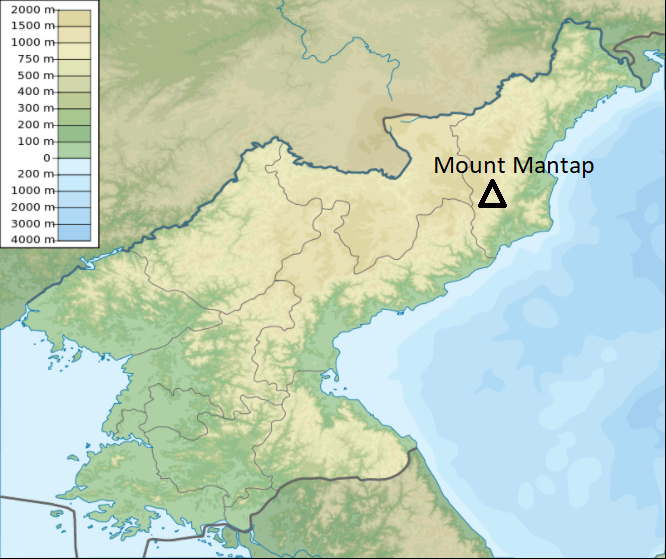The U.S. House on Wednesday shot down a proposed limit on the Trump administration’s pursuit of a low-yield nuclear weapon. Defensenews.com
Blog
-

Geiger Readings for Apr 28, 2018
Ambient office = 106 nanosieverts per hour
Ambient outside = 153 nanosieverts per hour
Soil exposed to rain water = 151 nanosieverts per hour
Crimini mushroom from Central Market = 121 nanosieverts per hour
Tap water = 87 nanosieverts per hour
Filter water = 74 nanosieverts per hour
-

Nuclear Reactors 555 – Safety Systems On Russian Water-Water Energetic Reactors – Part 1 of 2 Parts
Part 1 of 2 Parts
Russia is fully committed to nuclear power for domestic power generation and as a product to export. They have been going around the developing world talking deals with nations trying to expand their economies and to lift their people out of poverty. They will often offer loans to other countries to build Russian reactors for them. They also offer to fuel the reactor, operate the reactor and remove the spent fuel. One concern about such Russian plans is the reality that the Soviet Union and Russia both tried to influence the politics of countries in Eastern Europe by threatening to cut off their gas and/or oil exports to those countries.
Some of the worst nuclear accidents and nuclear pollution in the world occurred in Russia and neighboring countries during the Cold War. The Chernobyl disaster in Ukraine in 1986 had a profound affect on the Russian nuclear industry. They realized that the dangers of poor design and incompetence and have worked ever since to make Russian nuclear reactors extremely safe.
In a nuclear reactor, when the flow of neutrons increases, so do the reactions and the temperature rises along with the amount of steam. Control rods made of a neutron absorbing materials can be inserted into the core to reduce the neutron flow and cool off the reaction and reactor.
In the Fukushima General Electric reactors, the control rods were placed below the core and required electricity to be moved up into the core. When the emergency power failed at Fukushima, the rods could not be inserted, and disaster followed.
First the Soviet Union and then Russia developed a series of pressurized water reactors referred to as Water-Water Energetic Reactors (WWER). Their power output varies from seven hundred megawatts to twelve hundred megawatts and a seventeen hundred-megawatt reactor is under development. Versions of the WWER were installed throughout the countries that made up the Soviet Union. The WWERs were used in, are being used in or are being planned for construction in Armenia, Bangladesh, Belarus, Bulgaria, China, Czech Republic, Egypt, Finland, Germany, Jordan, Hungary, India, Iran, Slovakia, Ukraine, Russia, Turkey and Vietnam.
In the latest version of the WWER, known as the AES-92, as the temperature and the amount of steam in a WWER rises, the steam begins to absorb neutrons and the temperature and steam are reduced. In a WWER, the control rods are positioned above the reactor. If the power fails, the electromagnetic clamps that hold the rods shut off and gravity drags the rods down into the core. The WWER is self-correcting and does not require human intervention to operate stably.
There are additional security measures in Russia WWERs that are dedicated to making the reactors safer. These four safety measures makeup forty percent of the cost of the reactor.
The fuel cells in the reactor are manufactured at one thousand-degree Centrigrade temperatures and are resistant to very high temperatures. There is a zirconium fuel cell matrix that can prevent nuclear fuel from being released into the coolant. There is a two-circuit coolant system (there was only one circuit cooling system in the Fukushima reactors). This would prevent fuel from being dumped outside the containment zone of the reactor.
Please read Part 2 -

Geiger Readings for Apr 27, 2018
Ambient office = 151 nanosieverts per hour
Ambient outside = 60 nanosieverts per hour
Soil exposed to rain water = 52 nanosieverts per hour
Seedless purple grape from Central Market = 77 nanosieverts per hour
Tap water = 95 nanosieverts per hour
Filter water = 89 nanosieverts per hour
-

Nuclear Weapons 339 – Northwestern University and Argonne National Laboratory Develop New Material For Inexpensive Radiation Detectors
One of the most important security tasks for entry points into the U.S. is the detection of radiation that might indicate an attempt to smuggle radioactive materials or weapons into the U.S. A research team from Northwestern University and the Argonne National Laboratory has developed a new material that could be used to make radiation detectors that are much less expensive than the current generation of commercial detectors.
The new material can be used in a device that can detect gamma rays given off by radioactive materials. It can also easily identify specific radioactive isotopes. Potential uses of the new material beyond hand-held radiation detectors includes applications in spectroscopy, astronomy and biological imaging.
Northwestern’s Mercouri G. Kanatzidis is a Charles E. and Emma H. Morrison Professor of Chemistry in the Weinberg College of Arts and Sciences and the corresponding author of the paper. He said, “Governments of the world want a quick, low-cost way to detect gamma rays and nuclear radiation to fight terrorist activities, such as smuggling and dirty bombs, and the proliferation of nuclear materials. This has been a very difficult problem for scientists to solve. Now we have an exciting new semiconductor device that is inexpensive to make and works well at room temperature.”
In 2013, Argonne published a paper that discussed the potential of using cesium lead bromide in the form of perovskite crystals for the detection of high-energy radiation. Since then, the labs at Northwestern and Argonne have been working on purifying and improving the material.
Yihui He is a graduate student in Kanatzidis’ group and the first author of the new paper on the group’s research. He made the major breakthrough when he redesigned the semiconductor device at the heart of the radiation detector. Instead of using the exact same material for the electrodes on either side of the perovskite crystal, He used two different compositions of electrodes. In this configuration, the device only conducts electricity if are gamma rays present. When the new device was compared to a conventional cadmium zinc telluride (CZT) radiation detector, it performed just as well as the more expensive CZT in detecting cobalt-57.
If and when radiation is detected, it is important to be able to say exactly which radioactive isotope triggered the detector. Some isotopes are legal, and some are not. The detector with the new material was able to successfully identify americium-241, cobalt-57, cesium-137 and sodium-22 in tests. The researchers also produced larger crystals than they needed for their tests to prove that the production of the new material was very inexpensive.
With the grave concerns about smugglers trying to bring radioactive materials into the U.S., an inexpensive handheld gamma ray detector and isotope identifier could be distributed to every manned border crossing into the U.S. The border patrol could also carry these new devices as they patrol the border between manned crossing points. Customs officials for international travelers could scan checked luggage and carry-on bags at airports and ports of entry. This new device could give U.S. citizens more confidence that smuggling of nuclear materials into the U.S. will be prevented.

-
Nuclear News Roundup Apr 26, 2018
Critics say the risks are too great in the plan to temporarily store tons of spent fuel from U.S. commercial nuclear reactors in southeastern New Mexico. Hastingstribune.com
“Australia has decided to change its foreign policy to allow the export of uranium to India, but only subject to a number of “strict conditions”, prime minister John Howard has announced. Neinuclearnotes.blogspot.com
-

Geiger Readings for Apr 26, 2018
Ambient office = 81 nanosieverts per hour
Ambient outside = 78 nanosieverts per hour
Soil exposed to rain water = 80 nanosieverts per hour
White onion from Central Market = 139 nanosieverts per hour
Tap water = 58 nanosieverts per hour
Filter water = 47 nanosieverts per hour
-

Nuclear Weapons 338 – North Korea Halts Testing Of Nuclear Warheads After Severe Damage To The Test Site
Much has been made in the media of the announcement that North Korea will halt ICBM and nuclear warhead testing. The U.S. President sees this as a positive step toward the denuclearization of the Korean Peninsula. The N.K. leader says that they no longer need to test ICBMs or nuclear warheads because they have learned what they needed to to construct their nuclear arsenal. There may be another reason that N.K. is going to stop testing nuclear warheads underground at it test site.
The last five of N.K. underground nuclear warhead tests were all conducted under Mount Mantap at the Punggye-re nuclear test site in the northwest part of N.K. N.K. selected Mount Mantap because of its elevation, almost seven thousand feet above sea level, and because they believed that its thick, gentle slopes would be able to withstand the structural damage caused by the underground blasts. There were no visible signs of damage after the first four test detonations.
The last test conducted was a powerful thermonuclear blast over two thousand feet below ground level. However, the one hundred kiloton bomb detonated on September 3 opened up a cavity that was over six hundred feet in diameter.
Following the last test, the green vegetation covering the slopes of the mountain turned reddish brown. The test tore a hole in the mountain and created a “chimney” that could permit radioactive fallout from the test zone to escape into the atmosphere above the mountain. As the shock waves traveled though the mountain, a large section of the mountain’s peak collapsed into the cavity formed by the blast and left a crater in the top of the mountain that was visible in satellite photos of the site.
The U.S. Geological Survey reported that they had detected an earthquake in the area near the mountain of 6.3 on the Richter Scale at a depth of fourteen miles. Chinese scientists said that they detected a second earthquake near the mountain of 4.6 on the Richter Scale eight minutes after the first quake was registered. Tremors from the two quakes were felt in the Chinese city of Changchun which is two hundred and fifty miles from the test site. People in eastern Russia also reported feeling the effects of the tests. There were three small additional quakes in the general area of the test site which reinforce the idea that the mountain has lost geological stability.
A researcher at the Chinese Academy of Sciences in Beijing said that their studies indicated that the N.K. test “site was wrecked beyond repair. “Different teams using different data have come up with similar conclusions,” he said. “The only difference was in some technical details. This is the best guess that can be made by the world outside.”
Chinese scientists are afraid that escaping fallout from the “chimney” in Mount Mantap could travel over the N.K. border and threaten Chinese territory. The Chinese city of Baishan with over one million inhabitants is less than fifty miles from Mount Mantap.
A scientist in Beijing said that it was likely that N.K. received a stark warning from the Chinese government to discontinue their tests of nuclear warheads under Mount Mantap. He said, “The test was not only destabilizing the site but increasing the risk of eruption of the Changbai Mountain,” a large, active volcano at China-Korean border.”
